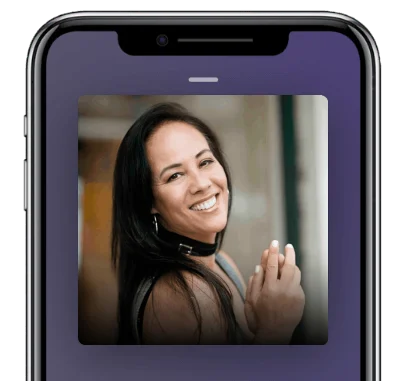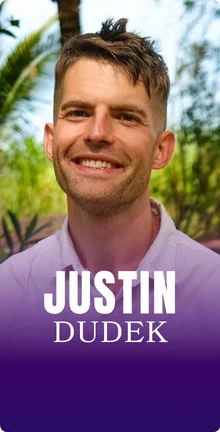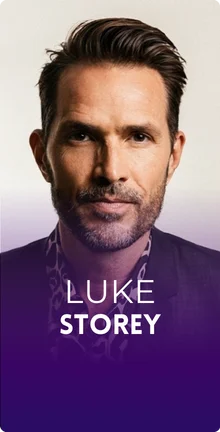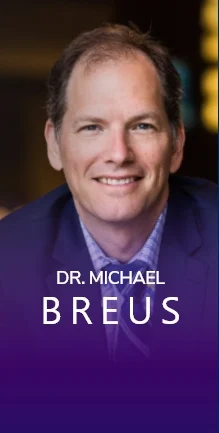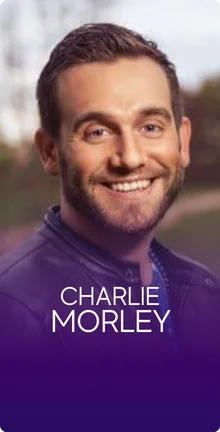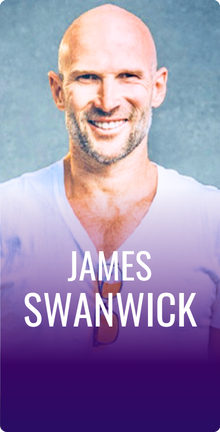Thanks so much for having me. I’m excited to be here.
First of all, let’s define Quantified Self and then we’ll talk about how you got into it.
Quantified Self is a movement that began around 2008 and it was led largely by Kevin Kelly and Gary Wolf who met at Wired Magazine. They had been apparently walking along the beach and talking about how it would be interesting to have individuals measure aspects of their life to see how that influenced the optimization of their lives. They said, “How about we get some people together and talk about this idea?” They invited some number of friends and one of the people they invited was my husband, Joe. He said, “Kevin Kelly invited me to this thing tonight, do you want to go? How about we make it a date night?”
I went and there were about twenty people there. Tim Ferriss was one of them and maybe eighteen or twenty other people. The meeting took place at Kevin’s office, living room space. People shared information about what they had been collecting, the data they’ve been collecting. For example, one person shared a program that they had written that recorded every interaction they’d had and they had been tracking for fifteen or twenty years, the basics of every conversation that they had or the thoughts that they had. They could go back into this very simple program and click on someone’s name and find all the instances of conversations they’ve had with them. That was one example. Different people shared different aspects of tracking. Everyone was excited.
There was the sense that this was something to look more deeply into. Gary Wolf and Kevin Kelly started to organize meetups around that concept and that became the Quantified Self Movement, which is now in many countries. The last time I was looking, it was in over 30 countries or something like that where people would get together to meet and to share information that they had tracked about their lives and the conclusions that they came to as a result of it. People in the Quantified Self Movement track steps, they track activity and they track sleep. I remember one woman in the group that I ran, which was called Quantified Self Silicon Valley who tracks the influence of hanging her laundry and how that impacts her life.
I’m curious what she found to be the correlation or maybe causation. Hanging the laundry gave her what in terms of the output?
It was a long time ago. I remember it being something along the lines of it slowed her life down. It had some impact on how she implemented her daily life. The subtitle of Quantified Self is Self-Knowledge Through Numbers. The idea is that you track something in a quantified way or you track quantified information and you make conclusions about yourself from that.
I’m wearing an Oura ring currently and I wear it almost all the time. It’s tracking my sleep, my activity level, my heart rate and it syncs with an app on my iPhone. It tells me how much sleep I had, how much of that was deep sleep, REM sleep, how much activity, estimated calorie burn, etc. All of that is tracked and that would be considered part of Quantified Self, right?
Yes. In the early days of Quantified Self, there weren’t that many hardware devices that you could use to track things. As time went by in the Quantified Self Movement, I think people who are making devices realized that there is a market for it and people are interested so more and more there have been devices that have been formed. In the early times that I remember, when I used to start tracking sleep is the Zeo. Zeo was the way most people track sleep and then that died. Then steps were tracked separately with Fitbit and other devices like that. I think the Oura ring and a lot of other devices now that track multiple things and the ability to track in ambient style terms of living your life has got so much stronger now. I have an order in for an Oura ring also. I haven’t got it yet, and I’m looking forward to it because definitely, it’s a step up from any of the devices that I’ve had in the past.
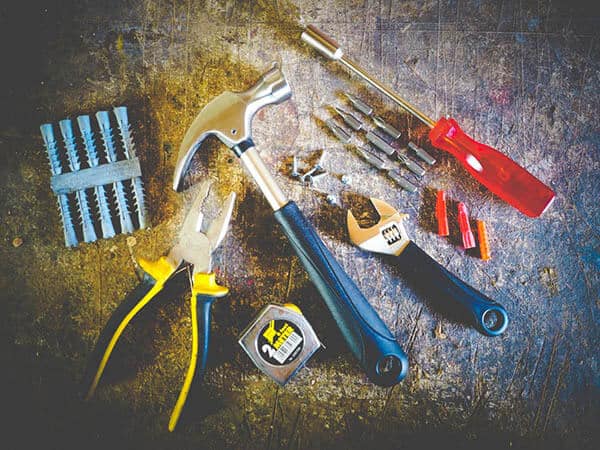
I’m also waiting on the new version. I’m wearing the version 1.0, the big huge one. People ask me, “Is that like a mood ring or something?” The new version has HRV, heart rate variability tracking. I’m looking forward to that. I still own a Zeo but I can’t use it anymore because one of the more recent updates to the iOS broke the app. Even though the company went out of business, I could still use the app, I could still use my device until recently. It’s a big difference between a device that tracks your sleep, especially deep sleep, by monitoring your brainwaves and one that monitors your heart rate and your activity level and estimates your deep sleep and REM sleep based on that. That’s pseudoscience. I want it tracking my brainwaves and the Zeo does it. There’s a new device called the Neuroon and I have that. It’s big and bulky. It’s an eye mask with the sensor attached inside the sleep mask and it’s big. I’m not comfortable wearing it at night so I’ve not been tracking my sleep with it, but that one does do the brainwave detection.
You said it’s a mask, does it also serve to block out light, which is also important for quality sleep?
Yes, it does.
It’s physically bulky in a way that gets in the way of your comfort?
Yes. It’s a foam thing. I sleep on my stomach and then I ended up sleeping on the sleep mask and then because it’s bulky, it’s very uncomfortable. Whereas if I’m wearing an eye mask, no problem. I can sleep on that on my stomach and then my head’s down in the pillow.
In the tracking that you’ve done with your sleep, have there been any results that have impacted your actions or choices that you’ve made? What have you learned and what have you implemented from your sleep tracking?
I pay particular attention to my deep sleep. I used to pay more attention to it when I would get the data from the Zeo or from the Neuroon. I don’t believe the data I get from the Oura ring. The Oura ring says I’ve got eighteen minutes of deep sleep or 25 minutes of deep sleep, and I’m thinking based on the previous history with the Zeo and the neuron, probably 45 minutes to an hour is typical for me. I don’t think I could survive. I would be pretty ill if I only got eighteen minutes of deep sleep on average every night. That’s not good for a person my age.
Does it change your supplements or your sleep patterns? How do you respond to less deep sleep than you want?
I try to adjust to the environment. I lower the temperature in the room and block out more light. I get those dots that you can tape on top the different devices in the rooms. You want to get all the devices out as much as possible. Let’s say there’s an AC unit and has some led light on it, then I want to block that out. I’ve got some tape over one right now in the bedroom. Stuff that will likely improve my sleep but I don’t know for sure, then I test it and see what the data shows. What do you do?
One of the sleep experiments that come to my mind that’s amusing that my husband and I did a number of years ago was we put an infrared camera in our bedroom, which seems weird. We had it timed so that it would go on when we were sleeping, and it basically tracked our movements. He did the data analysis because that’s not really my skill set. When we did the data analysis, we saw this definite correlation between when one of us move we’re waking the other up. It probably isn’t rocket science to get to that supposition but definitely, we had that in both hard data from the Zeo data and also from the way he interpreted the infrared movement data that he found on the camera recordings.
What did that influence? We went and bought a mattress that’s more of a memory foam mattress, with the hopes that we’re waking each other up less. I think it did have that impact. That’s one thing that we did do. I haven’t tracked my sleep for a very long time because once Zeo went out of business, I only tracked it for a little bit longer. I didn’t hang on as long as you did. For me, a lot of times it is self-awareness and looking at the data and saying, “It’s not just my imagination. I actually am not sleeping well.” I definitely can see that my sense that I’m waking up at a particular time every night is true. It tends to be [4:00] in the morning and I wake up. I would say I haven’t been wholly successful in influencing my sleep, although I have made some changes like taking 5-HTP and L-Tryptophan that I believed make a difference for me.
There are different types or variations of depressive disorders, and we can moderate and improve our symptoms through amino acid therapy. Share on XTell the audience about the supplements.
L-Tryptophan and 5-HTP are both amino acids. I can’t tell you the exact scientific aspect of it but basically, they influenced serotonin in the body. I started to take them after reading a book called The Mood Cure, which I’ve recommended to so many people. I’m someone who has had a low-level anxiety disorder in the sense that for many years I took an SSRI called Lexapro, a very low dose of it, five milligrams of Lexapro. It helped a lot with moderating both my sleep and also anxiety levels. At a certain point, I decided I didn’t want to take it anymore. The book’s premise is that there are different types or variations of depressive disorders and that we can moderate and improve our symptoms through Amino Acid Therapy.
She basically lays out four different types. I can’t tell you all of them because mine was the first one, which is a little bit more of a tendency towards anxiety. She recommended this protocol around 5-HTP and L-Tryptophan and talks about why it makes a difference in serotonin, whereas SSRIs re-inhibit the uptake of the serotonin, these stimulate and generate serotonin in the body. I thought that sounds a little bit more in my mind like I’m getting on the basis of it and it also sounds more natural. I decided to try it and with some tweaking over a couple of months, I found a good balance for me. I’ve been using that protocol instead of an SSRI for probably the last five, six years. I would say the impact is as positive or even better than my experience of taking low doses of SSRIs. Sleep is one of the things that impact. I also find high doses of EPA helps my sleep. Fish oil is high in EPA, so I try to take around 3,000 milligrams of EPA at night, which is generally four or five big hunk of fish oil pills.
You don’t take the oil directly from a bottle, you take them in pill form?
I have to. I can’t handle the taste. I’ve tried taking it from the bottle because I think it’s purer and the quality is good and you can measure the dosage a little bit more, but I can’t handle the taste.
It’s an acquired taste I guess. I’m not a big fan of the taste either but I do drink it from the bottle, the liquid form. I use Carlson Fish Oil and I choose the lemon flavor. I’ve tried the orange flavor and that taste pretty nasty to me.
I remember that one. That’s one of the better ones and a little bit milder.
The Carlson brand is not super fishy. It’s doable and you don’t have to take all these pills. When I do travel and I’m taking the pills, I go for Nordic Naturals and I take the Ultra version. It’s a higher dosage of fish oil.
The other thing that I’ve found really makes a difference in my sleep is L-Theanine. I don’t know if you’ve ever taken L-Theanine. It’s basically one of the extracts in green tea. For me, that’s one that works at the moment if I’m awake and I can’t sleep. I’ll take that one because it can sometimes induce sleep in a somewhat short period of time, half an hour to 45 minutes.
Do you do wear the glasses that block the blue lights?
I have in the past, and it probably makes a huge difference. I definitely use the f.lux on my computer so that the blue light stops progressively overtime for the last hour or two on my computer. I definitely know if I turned f.lux off like, “I’ve got to see this one thing,” and I turn it off, it completely destroys the induction of sleep. I think that the glasses work, it’s just that I’ve never built a good habit for it. Do you?
I’m not in the habit of it. I’ve got TrueDark glasses, the ones from Dave Asprey. I like it but it’s hard to wear the Twilight ones, which are very red. Trying to watch a movie with everything being in red is not great and I don’t enjoy that. Not that I watch movies every night or anything.
It’s a habit like anything else. Sometimes it just takes building that in. There are so many things you can build habits around. You can’t always do them all at the same time.
You use the f.lux app and that’s something that you can run on your laptop and also on your android phone. iPhones already have a night shift mode installed, so you can turn that on. In fact, on the Mac there is night shift so you don’t even need f.lux.
I also do have my bedside lights or red lights, so that if either of us wakes up in the night to read, it’s in red light. Reading definitely helps induce sleep for me and if it’s in the red light, I think it’s a little bit easier to come back to sleep.
Do you have an evening routine where you’re reading, you’re doing meditation or whatever that helps get you geared up ready for sleep?
Honestly, what’s worked for me for the last six or eight months is I listen to podcasts almost all night long. It’s hard for me to turn my brain off and I get going and I get thinking and I get going and I get thinking. Somehow if I have something to train my brain on that is words but somebody else’s words, I’ve always noticed in my life that if someone was talking to me it would be easier for me to fall asleep. It’s almost a technique for not going down my verbal chatter brain and that works well for me. I listen to podcasts most of the night, which I think is a bit funny.
Do you have earbuds in the whole time?
I have a headset that’s got a fair amount of foam on it. It’s pretty comfortable. I also have a couple of eye masks with earphones in them and wireless ones or Bluetooth. I have a couple of different versions. I find that if I have this chain of words going on in my brain, it’s one of the biggest influences on my ability to sleep. It’s finding out some little odd thing that works for you.
Some people cannot sleep without having the TV left on.
I’m sure that it serves the same function for many people.
What else are you measuring in your life, Quantified Self-style?
I’m not actively involved in a Quantified Self-process for myself right now, except for the fact that I have tracked my weight for a long time, largely because it’s one of those things that’s super easy. I have a Withings scale is now Nokia. Basically, the scale is still the same but I have to use the Nokia Health Mate App now to track it and I love that scale. I’ve tracked my weight for probably ten years and it’s been interesting. I’ve learned so much about tracking my weight even though I haven’t always correlated it to something else. I track my weight with the Withings scale and I track my fasting. I use the Vora App to track my fasting and I basically practice intermittent fasting. That’s the most recent thing I’m correlating with my weight.
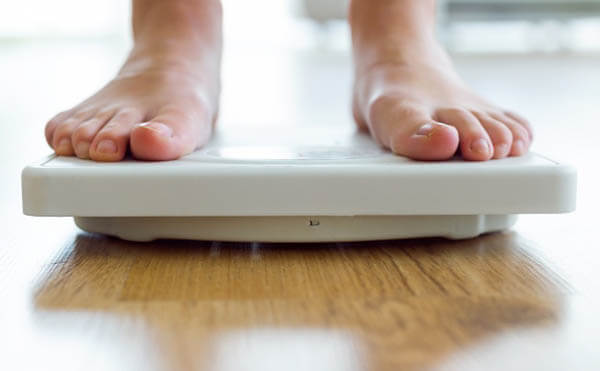
I can also see my life events in my weight. For example, my mom was diagnosed with pancreatic cancer in June of 2016, and I was at that point in my lowest weight because I’d started dancing. I can see when I started dancing, my weight dropped 22 pounds. I can see all these life events through the tracking of my weight but then I can add something in. For example, I added this intermittent fasting practice. I can go back to my Nokia Health Mate or my Withings Scale information and see what the impact is. I’m not the most rigorous person. I’m definitely not any kind of data scientist. I’m just your average non-scientist person who looks for the ability to optimize my life in the best way possible. I’m excited by the idea of using tracking and by using data, but it’s definitely not my strongest wheelhouse. I’m definitely more of a subjective person but it’s pretty cool to be able to go back and look at my data and say, “Look at the impact this is having.”
You’re using the Vora App in what capacity? I’ve never heard of that app. I’m familiar with intermittent fasting and we should probably talk about that too, so our audience can know what we’re referring to.
Intermittent fasting is a practice of delaying or creating eating windows in relationship to non-eating windows. Basically, you’d pay attention to periods of time that you’re eating and periods of time that you’re not eating instead of snacking throughout the day. The supposition is that our bodies as humans are not meant to be constantly in feeding mode. We do that because that’s become our lifestyle where food is always around and we have food spread out through the day and maybe we would have a snack before we go to bed and then maybe we have a glass of wine at night, and then we would get up and we have a coffee with cream.
The idea is that part of our current ill health collectively is due to the fact that we’re constantly hitting our bodies with variations of sugar or variations of food that needs to be processed throughout the day and almost consistently. The idea is that there are some long-term health processes, specifically autophagy is one of the ones that I’m after from my knowledge. A lot of the information that I’ve got from Dr. Rhonda Patrick and Jason Fung, both of whom suggest that by putting our bodies into a state of autophagy which happens after fasting influences. We get the benefit of cellular regeneration through that process.
Jason Fung also talks about intermittent fasting as a way of addressing obesity. He helps many people deal with obesity by intermittent fasting or different versions of fasting and also supporting and improving insulin responsiveness and blood sugar responsiveness to reverse Type 2 Diabetes. Intermittent fasting can take different forms. I have on my show a whole episode on an introduction to intermittent fasting called Intermittent Fasting – A Primer. One of the most common ways that people start out with intermittent fasting is by doing a process called 16:8. What that means is you eat within an eight-hour eating window. If you start eating and you have your first calories of any type at noon, then you eat up until 8 PM. At 8 PM you close your eating window, you stop eating, and then you fast right through with water only ideally until your next window, which is at [12:00] noon.
If you’re doing 16:8 window, that’s sixteen hours of not eating and eight hours of eating. That’s a pretty easy way to start because there’s not that much difference. It basically means being aware of not snacking at night and skipping breakfast and having lunch so it’s pretty easy way in. A lot of people move up to an 18:6 model which is what I use about five or six days a week right now, which means I eat within a six-hour eating window. Then some people even do 20:4, which means they eat within a four-hour eating window or they’ll do what’s called one meal a day. Maybe at [3:00] they’ll start eating and they’ll allow themselves to have one meal over the course of four hours and then around [6:00] or [7:00] or whatever, they’ll close their eating window and they’ll stop eating.
I also do an extended fast around once a week, which means I don’t eat for one day. That’s either a 36-hour or a 40-hour fast. That’s the general premise of intermittent fasting and the 36 hours to 40 hours would be considered an extended fast. The Vora App is an android app that I use to track when I start eating and when I stop eating. If I go back on my app, I can look back over the past number of days or it tracks quite far back. For example, if I open my app right now that this weekend, I didn’t hit my eighteen-hour fast twice but last Wednesday I did nineteen, last Tuesday I did twenty and Monday I did seventeen and a half. I can see all my fasts and I can also correlate my weight right inside the app. Although I do both because I have the Withings scale also.
Do you also do a cleansing or longer-term fasts, like a seven-day water fast or seven-day juice cleanse or that sort of thing?
I’m not inclined to do a juice fast because I am more interested in reducing the number of times I’m hitting my body with extreme sugars. Other people might do a juice fast if they’re interested in other aspects of health like clearing out the digestive system or something like that. For me, I’m more interested in sugar modulation because that Type 2 Diabetes runs in my family. I believe that it would be great for me to do a three-day fast. Three-day fasts are considered by many to be the next level benefits. In other words, doing a 24-hour fast or skipping one day, 36-hour fast, 40-hour fast is a sweet spot for getting the benefits of autophagy, which I think some people believe begin after about 24 or 36 hours.
A lot of people believe it’s the second day of a fast that’s difficult. If you’re going to go to two days, you should go to three days where you get even more benefits of autophagy. For me, that is a little bit outside my comfort level. I feel like it’s very hard for me to fast that long. That is not to say that I won’t ever do it because before I fasted for one 24-hour period, I didn’t think I could do it. Some of it is just adjusting your own expectations of yourself and building your habits. Now, that I’ve been fasting for about three months pretty regularly with 16:8 or 18:6 fasting model, maybe it’s more possible that I could do it but it still scares me a little bit.
I’ve done a seven-day juice fast and I’m not inclined to repeat it anytime soon. I think it was good but I don’t think I’ve got some long-term health benefits. That was part of a course I took at Tony Robbins’ course called Life Mastery. Everybody went on this juice fast and we would get Udo’s oil as well as fresh juice to drink in smaller quantities and we had a lot of water too.
There are people I know who do dry fast. I know so many people who do seven-day dry fast. I cannot even conceive of doing that. It doesn’t seem healthy. I know I get dehydrated easily. It does not seem healthy to me but some people swear by dry fast. I don’t know it was possible but apparently, it is.
If you induce elements that would be extremely stressful on the body, the body kicks in to new levels of health. Share on XI thought that’s how you die the fastest.
That’s what I thought too. Maybe the argument is that’s, therefore, inducing autophagy. The idea of a hormetic response is that if you induce elements that would be like dying or extremely stressful on the body, that there are some benefits that the body kicks into new levels of health by introducing that edge. Maybe the idea is that dry fasting does that. I’m not going to be doing a dry fast anytime soon, I can promise you that, but people do it.
Another thing that we did in Tony Robbins’ Life Mastery event was colonics every day. It’s weird and it’s not something I would get in mind to go do anytime soon again. I think there are some health benefits. There are other things that I’d rather do that also give health benefits besides doing that. Just circling back here to The Mood Cure book and you’re addressing your anxiety. Did you ever have panic attacks? Is that how your anxiety surfaced or was it just a lower grade or lower level?
My anxiety has been low-grade, what I call general anxiety. It’s like this feeling of things aren’t right and I’d try to find something to attach it to. I have had a couple of experiences of panic attacks in my life. One of them was I was trying to address my sleep by taking Cetirizine. It’s an allergy medication or something and my husband had suggested that for some people this can help them sleep. I tried it a couple of days and I had the most intense panic attack I could ever imagine. I said, “That is clearly not for me.” I’ve had other periods of time, part of my grieving process when my mother died, was a feeling of panic and hypochondria. It definitely felt my mortality in a way that I experienced as fear and anxiety. That got heightened for some period of time and I say that not because I could promise any quantified self-approach to resolving that but more because I was surprised by it. I like to talk about experiences that I have that I’m surprised by because the more people revealed their experiences, the more helpful it can be to other people to anticipate, “I’ve heard about that happening before.” My grief response to my mom dying had huge elements of panic, fear and hypochondria.
How long did that last for?
I’d say at the acute level, maybe between three and six months. Generally, my anxiety has been more of the low-grade variety.
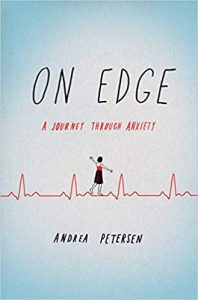
I had Andrea Petersen on the show and that was a great episode. It was all about anxiety. She had pretty severe anxiety, panic attacks and everything for many years. She wrote a book all about her experience and all the research she did. She’s a pretty famous journalist. This book, On Edge, is out. It chronicles her journey of addressing her own anxiety issues and the success she’s had with that.
I will also say that one experience I did have or I have had is I have occasionally had claustrophobia responses in planes. At one point, it got worse. Anyone who’s experienced any kind of phobia or extreme anxiety knows that when you have that experience then you start to fear that you might have that experience, then you can induce that experience. You get into this cycle where you get on it. For me, I get on a plane and I’m like, “I’m going to have an anxiety attack or a claustrophobic response being on this plane.” Then of course the fear of it would induce it.
I did do a hypnosis session one time around that experience. The hypnotist gave me this very simple process which I found to be extremely powerful. She said essentially that when you see yourself having the thought which is, “I can’t get out, I can’t breathe or they’re going to close the doors,” or whatever the thought that starts to induce it, reach your hand out straight forward and say in your brain out loud if you can, “Stop,” while you’re putting your hand out in a stop mechanism. It sounds simple. Why would that work? I have found that once I built the new association to myself to that physical action of saying, “Stop,” when I saw thought that was going to start taking me down a rabbit hole, the impact has been huge. It’s just another vote for the fact that we can build somatic and physical associations to our thoughts.
Where did you learn about that?
I did a session with a hypnotist, a hypnosis session where she took me into a hypnotic state, which is in my experience basically just a state of relaxation. I even went to her at that point with this feeling of, “For some reason I have some claustrophobia coming out and I want to deal with it,” and so that was the technique that she gave me. I’ve had another one where I’ve had a repeating thought that sometimes has been getting in my way of being present in the moment. It’s like a future worry thought, which I really avoid future worry thoughts. I created another similar one, which is very Tony Robbins-like creating pattern interrupts where I’ve seen myself going to those thoughts and now my physical action around this particular one is to make a cutting sound. I’m going to cut that thought. Those kinds of anchors between an idea or stopping a thought combined with a physical action can be powerful when predesigned and used.
It reminds me of Cognitive Behavioral Therapy as well, CBT. You normally just start having the thought or the reaction to the stimulus to that trigger, but with CBT you introduce a way to put a space in there and make a choice like, “I just experienced that trigger, but I’m going to change the meaning of that.” It doesn’t have the emotional pull. Let’s talk about Quantified Self in terms of learning. You’re quite an avid learner, you’re very into that. You’re learning all the time.
I’ve been involved in the Independent Learning Movement deeply for about ten years. Interestingly, I feel that I have never combined. I always had this sense that combining quantified self and my work in the Independent Learning Movement would make so much sense. I’m sure some people do it, but I’ve never married those things in my life. As I’m talking, maybe I’ll be like, “I did do this.” My impact and my influence and my involvement in the Independent Learning Movement started when my oldest child was seven. We decided that being in a regular school environment was not the best environment for his learning style and his brain type and his personality and everything. With a friend, I co-founded a group meant to support people in the San Francisco Bay area who were independently educating, some people say homeschooling but I don’t, but independently educating their kids outside of brick and mortar school.
We can build somatic and physical associations to our thoughts. Share on XOur group was specifically targeted for kids who weren’t otherwise getting their intellectual and academic needs met. The misnomer that most of us dislike is the word gifted, but the idea is that kids whose academic and intellectual needs just were not served in a narrow environment with a one-grade range of access. Surprisingly, this group grew very quickly and very large and we’ve done all we can to keep it as a small group, which means we ask people to leave or remove them if they’re not actively involved. Generally, we have a hard time keeping it around the area of 350 to 400 families in the San Francisco Bay area who are actively independently educating their gifted kids.
This doesn’t include Waldorf education, Steiner education or Montessori or anything like that, it’s just purely at-home learning. Is that right?
The reason I don’t say homeschooling is no, it’s not purely at home. In fact, I don’t do any of what people would typically consider to be homeschooling where you’re sitting at the table with your kids with a math book pulled out. I do pretty much zero of that. It’s more the way I see it. The way I approach it from my approach with my family and many people in my group approach it is we’re designing and customizing learning opportunities for our kids in ways that speak to their interests, their learning style, their needs, and their level. That might look like organizing a class with this incredible physics teacher and getting eight other kids to join in at my house. Then the same day following it on with a creative writing class or a roleplaying or writing through D&D class and then follow that on with some park day or something like that.
It could mean organizing a series of classes at your house or at a library or at a community center. It could mean taking advantage of the online classes at all levels. When the MOOCs, Coursera, Udemy and all those things came out, they gave a lot more access to independently educated kids who had the ability to comprehend high-level information but not the ability to necessarily write super long essays. Online learning has been an incredible resource for people in our community. The fact that many organizations, museums and businesses have realized that there’s a market in direct to consumer learning, people are willing to enable to pay for high-level quality classes if they offer them. A lot of businesses in the Bay Area and I’d say probably in other places too have realized that instead of having their businesses only operating in the afterschool hours between [3:30] PM and [6:30] PM, they can offer classes and experiences during the day to independently educated and homeschool families.
Does this include unschooling as well? Is that part of the movement?
I would say that the people in my group range anywhere from identifying themselves as unschoolers to a la carte learners. There are some people we call the other ender school at home. My group doesn’t tend to attract too much of the school at home people. School at home people are the people who take the school model and just do it at home. That’s a lot more common in the Christian homeschooling world because their reasoning for homeschooling is that they don’t necessarily have a problem with the content of school but they want to keep it within their community and their home. Whereas the people in my community tend to be people who don’t see school as the ideal model and want to upgrade the offerings and the learning situation and lifelong learning philosophies and engagement with their kids. They’re generally are not wanting to recreate school at their home because they see a better possibility.
To answer your question, there are definitely people in my community who consider themselves to be unschoolers. I don’t consider myself to be an unschooler but the term I use often if I’m not using either a la carte learning is parent-led, child-approved. I may go out and do all the research and find things that I think my kids would be interested in classes and make suggestions to them. If it doesn’t fit them or they don’t like it, then I might look for something different. For example, when my son was about fourteen, I said, “I feel like something that’s going to benefit you and your life is to put a little bit more attention on your writing, are you open for that?” They said, “Absolutely.” We look for a class that works and maybe it takes a couple of tries a class or a program or a group or a tutor or whatever. You started out wondering if I tied this into Quantified Self and I haven’t.
At one point, I had this idea that it would be so incredible to do a Quantified Self-experiment as a science group in my group. I had this idea and never got it together to do it, but I had this idea that if I get ten or twelve, twelve to sixteen-year-olds together to create Quantified Self experiments that that would be a fantastic science offering. Get everybody doing Quantified Self experiments and just walk them through experiment design, walk them through the process of identifying their habits, walk them through the process of imagining what might happen. I think that would have been awesome. I never got it together to do it, but I can see it being a great example of homeschooling or an independent learning class, like a class for independent learners that also taught science and self-awareness through Quantified Self experimentation.
There’s an explosion of opportunities and processes for learning at all ages. Share on XWhat about travel schooling, where does that fit in?
We’ve done a lot of what I would call travel schooling. I have one kid that’s in college, he’s nineteen, and a girl who’s thirteen. It’s a little harder for us now. My husband and I are both involved in a lot of different businesses and other activities, but we have over the years quite often taken an off for three, four months and gone to stay in a country. We spent about two months in Greece when my kids were two and eight and just traveling through the islands and learning and writing blogs and visiting sites. We spent three or four months trip in France while we were working on learning French and studying aspects of the history. We also spent three months in Thailand when my kids were fourteen and eight. We haven’t done as much as some other people I know who basically lived their lives travel schooling, but we’ve definitely taken advantage of the fact that we could recreate learning in any situation that we wanted. We do all love to travel, those have been some pretty magical times for us in terms of our family experience and just in terms of exposure to the world.
Have you heard of Semester at Sea?
I have looked at Semester at Sea. It looks interesting. I was thinking of the November trip for myself. At one point, thinking that would be cool to do but it just didn’t work out with my schedule. Have you done Semester at Sea?
No. I was thinking at a certain age that I think it’s best for maybe a freshman in college and then they can have an entire semester going on this cruise essentially to different ports and interacting with the locals there, learning things and volunteering and that sort of stuff. It’s just supposed to be an amazing experience. I heard about it from somebody who had that experience when they were younger.
The amazing thing is there are increasing numbers of options available. There are increasingly so many different ways to learn and that’s not going away and I’ve watched that change as I’ve been involved in the independent learning movement for the last ten years. Just an explosion of opportunities and processes for learning at all ages is really exciting. There are the options for people in the high school ages and then there are increasing options in the higher ed level too. I’m just seeing both of those areas explode. It’s been super exciting for me just to see how education has changed over the last ten years and where it’s going.
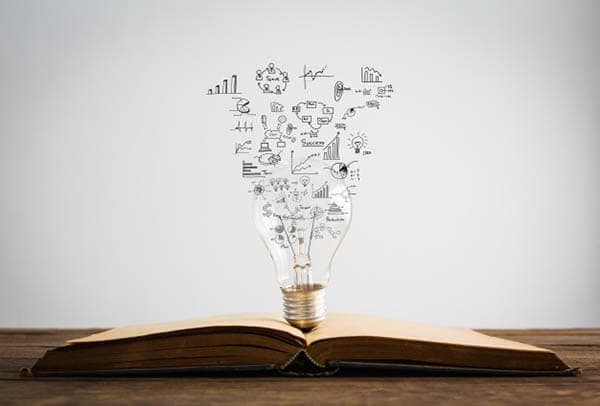
My kids are all grown up now, they’re all adults but when they were young, my wife and I at the time wanted some alternative education for them. We did our research, we looked at Montessori and all that, and we ended up sending them to Waldorf Schools and we’re very happy with it. It’s a very different model from the traditional public-school system.
Did they go through Waldorf in the high school level too?
They did, yes.
I know it’s very different from people’s association of the younger child Waldorf like if you think of just Waldorf as that younger artistic child level, I know the high school age changes quite a bit at Waldorf.
We’re living in New Zealand at the time that the two of them were going to high school. They call it Rudolf Steiner Schools over there instead of Waldorf. Waldorf is the way they refer to it in the States. They went to Waldorf School when they were very young, like kindergarten age. There’s a certain style to that like they would make stone soup in school, they would make dolls that were made out of felt and didn’t have faces and things like that. Then to have regular Science classes and stuff in high school, but taught in a Steiner approach. I think it was good for them but it’s not a fit for everybody. One of my daughters chose to go to Magnet school after just not feeling it was the greatest fit for her going to the Steiner high school. We supported that decision and that’s where she went. Let’s go back to this idea of how to become a super learner. We’ve been talking about how to educate your kids. What about yourself? How do you become a better learner? You have a podcast all about being a superhero version of yourself.
My podcast is called the Super Power U Podcast and the implication is it’s about you as a person and it’s about me as a person. The U is a reference to how do we school ourselves in an alternate way. The double entendre is there. I’d say that the connection between these things is that it has become clearer to me over the years as I’ve interacted with so many people in so many different circumstances. I was a business and life coach for a while. For ten years, I was a film and television actor working on my own processes of being the best self that I could be, being the best actor I could be, and growing myself as a person and as my toolset.
In the last five years, I’ve been a competitive ballroom dancer. My interest for myself and for how I support my children and other people isn’t all around how you can be the best person and the best version of yourself. It’s become clear to me as a parent, as a teacher and as a learner and competitor myself, that when you start with your strengths, you have so much more ability to move yourself forward. Our culture has this habit of saying, “What’s wrong with me and what do I need to fix?” I find that it tends to take us backward or take us on somewhat either a stuck place or a downward spiral. The more we can start with our strengths, the more we can move them forward. It doesn’t mean that we don’t address our challenges or address our opportunities for growth, it’s more that if we start with where we’re empowered, we’re going to be able to fly that much faster.
I like to think about that on all levels. In fact, I interviewed a champion ballroom dancer named Elena Grinenko. When I asked her about how she approached competition, she’s a world champion in both Latin and American rhythm, she basically said, “I approached everything I did with my strength.” She said, “When I knew what my strength was, I put it everywhere. I’m not going to compete on this other thing or that other thing or try to catch up with this person. I’m putting my strength everywhere in my choreography.” That’s an amazing metaphor for how we can live our lives. The more we can get clear on what that superpower is, what that special gift we have that we bring to the world, and then build everything from that foundation, the more we can just level up and make a difference.
How did you find what your strengths were?
I’ve done different things over the years. I like a lot of the assessments. StrengthsFinder is good. There’s another one that I can’t remember the name but I found it to be a great one. It’s got a funny name. Those are great for pointing towards possibilities where then you look and say, “Yes, I identify that.” It’s one of the most powerful ways you can find your strengths and it’s simple. One of my premises is that our superpowers are generally something that is so innate to us and so natural to us and so much the water that we swim in or the air we breathe that we don’t necessarily recognize it.
There’s something extremely powerful to asking some number of people, whether it’s three people in your life or ten people, putting it on a Facebook post or any way you can to ask other people who know you well and ideally from different areas of your life to reflect back to you that special gift that you bring. It does have that quality of it’s so natural to us. We think everybody else has the same one. That’s one way that I’ve got it reflected back to me is to see what other people say about me. For me, my superpower has to do with synergizing things, with bringing things together, bringing people together, and bringing ideas together for a higher end. That shows up in what I do in my podcast, is I want to amplify other people’s voices. I want to consolidate their ideas with mine and then put it out into the world for other people to use too. That’s one of mine.
Our culture has this habit of saying, What's wrong with me and what do I need to fix? Share on XWould you say that productivity is a superpower for you too?
I would definitely say productivity is an edge for me and not a superpower. I’m fascinated by it. I love it. I don’t feel like it’s my greatest strength. It’s like organization, I’m fascinated by organization. People who can create these processes around organization, I’m just in awe of and in love with, but it’s more like from an inspirational point of view but definitely not my strongest suit.
You are a student of productivity.
I would say I’m a student of productivity and organization. Some of the things that to come were difficult. The most difficult to me are things that I’m fascinated with but I find it very empowering to say, “This is not my strength and let’s stay with what my strength is even as I’m building.” It’s a much stronger place from which to build on those things that I’m fascinated by but not strong in if I lived first in what my skills and my strengths are. If I can just share something that’s been pretty interesting for me, discovering I have ADHD was hugely empowering for that. When I realized I had ADHD, it gave me so much more permission to recognize that my skill set is not in hyper-focusing or focusing. My skillset is actually in seeing a million things at one time and bringing them together. It wasn’t until I recognize the fact that I had ADHD that I was able to embrace that as my central means of perceiving the world.
Many people think of ADHD or ADD as a diagnosis or a disorder instead of just a different wiring. Back in prehistoric times, the hunters and gatherers were just two of the groups. There was another group called the spotters, and those were the people that are labeled as ADD or ADHD. The spotters kept the whole tribe alive because they would be the first to notice danger. They would be the first to identify a new hunting ground or a new place to stay safe and move the tribe to if the resources were running out.
For that reason, I see my ADHD brain as the foundation for my superpowers.
I know you’ve interviewed Tiago Forte and talked about productivity. What would you say is the most insightful or important thing that you learned from Tiago?
I love that interview with Tiago. I think you might have heard Tiago was one of the presenters at one of my Quantified Self, Silicon Valley. That’s how I met Tiago. The thing that I got out of my most recent conversation with Tiago and also just from talking to him in general is this idea that you can consolidate information down in layers. Whatever information it is, if you use a very specific note-taking process where you keep on continuously refining it, you can get to various levels of importance in that. I’ve used that for my show notes. The way I approached my show notes is I take my transcripts and then I consolidate that down to one other level, to the point where it gets to just my description. I’ve used his process for working on my show notes.

The other thing that I appreciated about my conversation with Tiago was his celebration of the process that he learned from his dad. As someone who is an artist but also a productive person and how because of his lifestyle, and because of the need for him to be constantly wanting to gather creative thoughts and ideas all the while also raising four kids in Northern California, that he had to come up with ways to constantly be thinking about productivity. I think my interview with him is a beautiful celebration of the role his father who is an artist played in his process towards productivity.
I hope to have him on my show at some point as well. How would somebody get in touch with you or learn more about you and your special gifts, your superpowers and maybe hire you if you’re available for coaching or consulting or anything? How would somebody take the next step with you?
My podcast is called the Super Power U Podcast. You can find it on any podcast platform that you use, I’m searchable there. Sometimes searching names is easier, but my name is a little hard to spell, Lisa Bett-LaCroix. You could go to my website which is LisaBL.com. Everything is there. You could also search on Super Power U on Facebook. I have a page and a group there. I would love to have people join me over there and just get involved in conversations around intermittent fasting and champion mindsets and the question of, “What’s your superpower?”
Thank you very much, Lisa. Thank you to everyone. We’ll catch you on the next episode of Get Yourself Optimized.
Links and Resources
- Lisa Betts-LaCroix
- Facebook – Lisa Betts-LaCroix
- Twitter – Lisa Betts-LaCroix
- LinkedIn – Lisa Betts-LaCroix
- Pinterest – Lisa Betts-LaCroix
- Medium – Lisa Betts-LaCroix
- Super Power U Podcast
- Facebook – Super Power U
- Elena Grinenko – previous episode of Super Power U Podcast
- Tiago Forte – previous episode of Super Power U Podcast
- The Mood Cure
- On Edge
- Dave Asprey – previous episode
- Luke Storey – previous episode
- Dr. Daniel Kraft – previous episode
- Mark Sisson – previous episode
- Nick Delgado – previous episode
- Dr. Daniel Amen – previous episode
- Michael Morelli – previous episode
- Andrea Petersen – previous episode
- Quantified Self
- Kevin Kelly
- Gary Wolf
- Quantified Self Silicon Valley
- Oura ring
- Neuroon
- L-Tryptophan
- 5-HTP
- Carlson Fish Oil
- Nordic Naturals
- L-Theanine
- f.lux
- TrueDark
- Withings scale is now Nokia
- Nokia Health Mate App
- Vora App
- Dr. Rhonda Patrick
- Jason Fung
- Intermittent Fasting – A Primer
- Life Mastery
- Waldorf
- Semester at Sea
- StrengthsFinder

